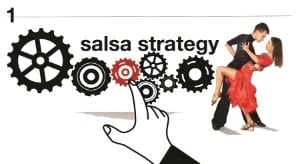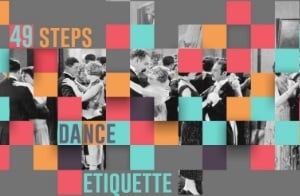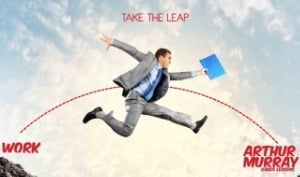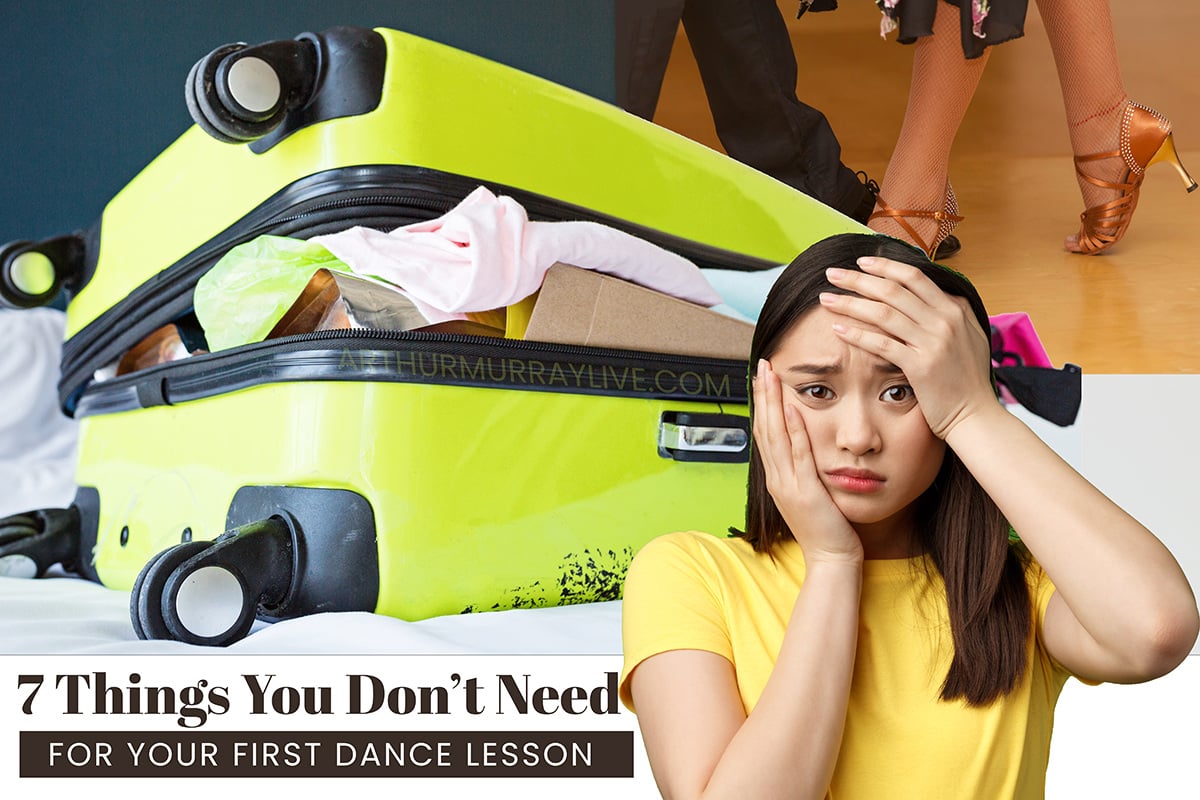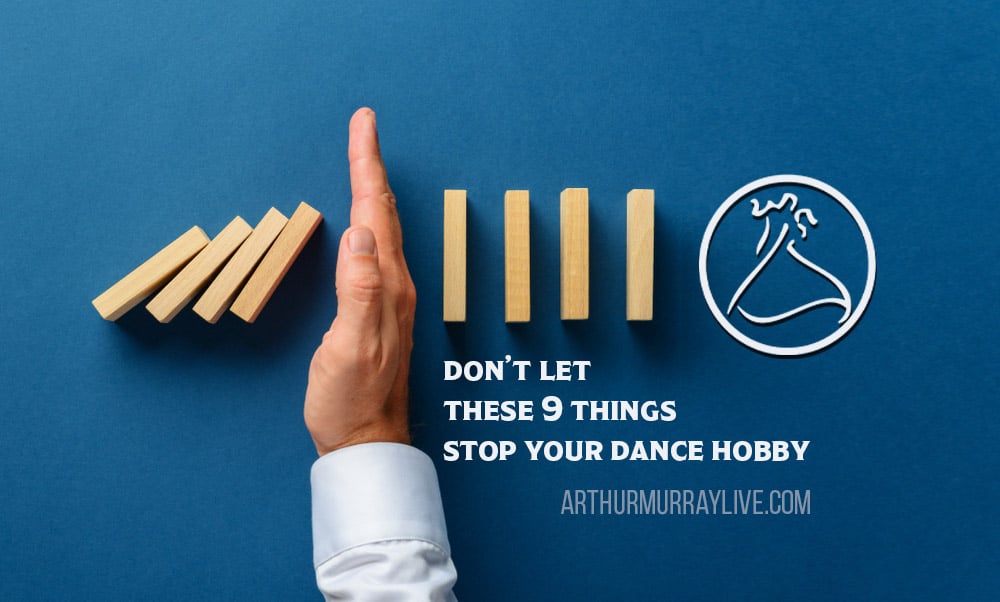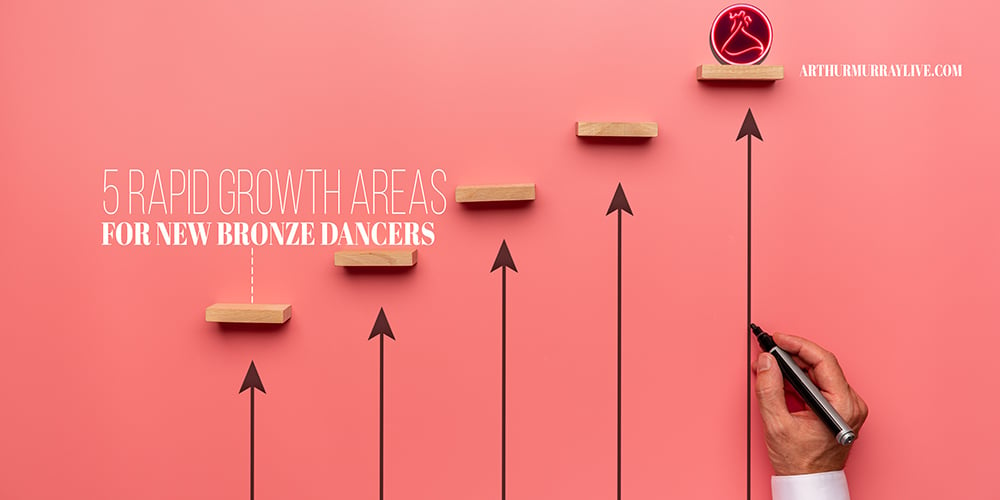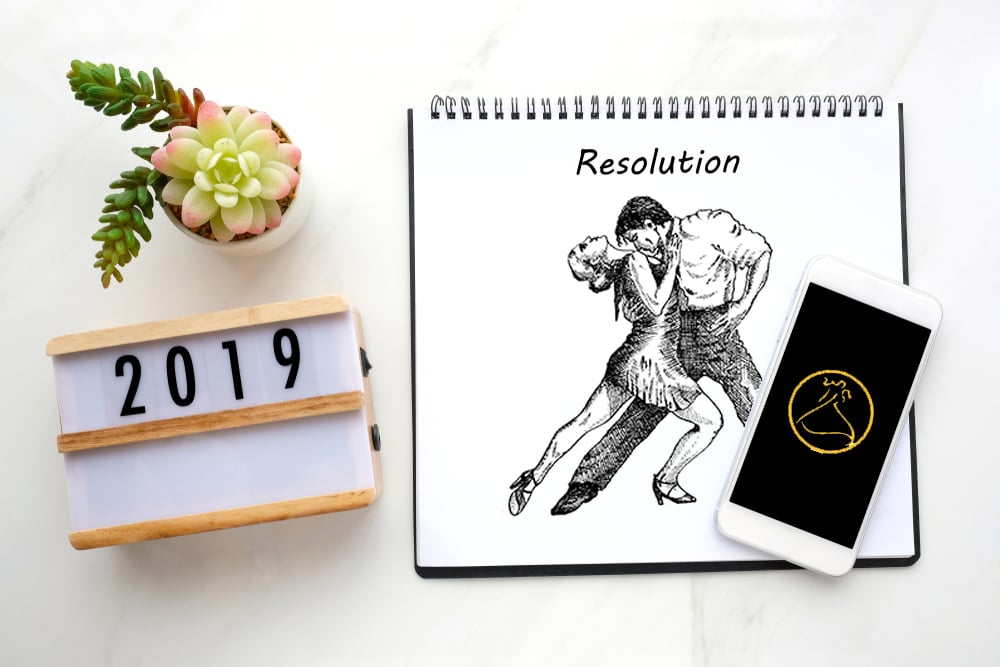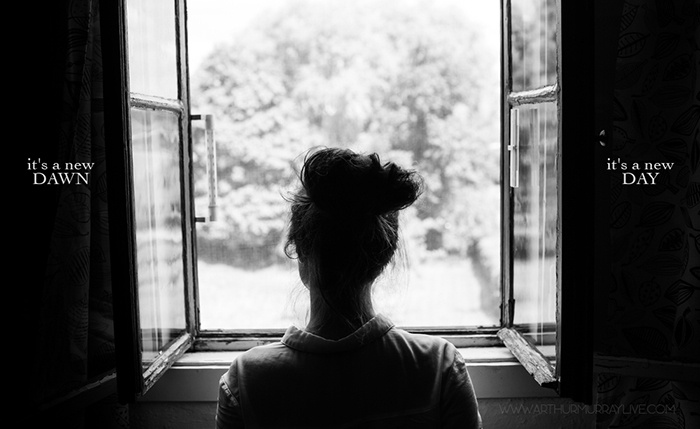
There's a change on the horizon.
Resolutions can be like orbiting planets - they all have their own schedules. While some decisions show immediate results, others can take more time to develop. When you walked through the door for your first dance lesson, that orbit completed its cycle... but it sent new dance goals in motion.
This stage is how they come into view.
New Year's Resolutions For Beginning Ballroom Dancers
The following are a list of commitments you can make. Some of them may take longer than others, but all of them will add depth and validation to your original desire to conquer ballroom dancing.
Call a Truce
If couldn't tell already, your brain and your body don't always work well together - especially in Bronze 1. We cover this in greater detail in "Dance Progress Explained: the Arthur Murray Curve Of Learning". While it may seem like there has been some type of mental or physical malfunction, it is actually just part of the growth process.

Make a resolution to keep your teacher informed at how you are feeling. They are the dance doctors, you are the patient, and they need to know when you're feeling some pain.
Here are some ways to think about it:
- If this were high school, Bronze 1 would be Freshman year.
- If this were a new job, Bronze 1 is like your first week on the job.
- If this were a recipe, Bronze1 would be mixing the ingredients together - it'll rarely look appealing or edible.
- Keep in mind that the managers are an incredible asset and they'll be visiting to give carefully planned lesson material to help bridge the gaps you may be feeling.
Plan My Social Dance Calendar
Whether it's a wedding reception, office party, or District Showcase - there are plenty of opportunities to accumulate important minutes on the dance floor to improve your social dancing skills.
Here are some ideas:
- Don't get thrown off by the name, but there are some great ideas to form a great strategy around your dancing calendar in the article "Master Your Dance Competition Calendar"
- RSVP to every wedding, high school reunion, and holiday party invitation you receive.
- Plan on attending the Medal Ball and District Showcase as these are both incredibly important events for developing your confidence while dancing, and are loaded with feedback for further development. Note: These events are tools to making large bursts of improvement, even if the goal is to dance at a smaller family function down the road.
- Share your calendar with your teacher. This is the most mission critical step. Your teachers are masters at equipping dance students, but only if they are given the information.
Shut It Down
Sometimes the worst critic you can encounter is yourself. That little voice in your head that is convinced of the worst possible outcome won't stop talking.
The fact is, that little voice, in all its "wisdom", doesn't have any real perspective on the process of learning. Sometimes the thing you're convinced is wrong isn't wrong at all, and your teacher will usually point that out. For more ammunition on shutting out that voice, we recommend that you check out "The Arthur Murray Formula For Social Dancing With Style".
Get Spontaneous
This seems weird to plan for, as the title suggests otherwise, but having a moment of spontaneous dancing can not only fulfill a resolution, but also something on your bucket list.
Here are some ideas:
- Try dancing at a restaurant, if there's room. We recommend the Tonga Room in San Francisco as a great place to start. It's a great atmosphere, great music, and the dance floor is big enough for a social Foxtrot, and dances like Swing, Cha-Cha, and Rumba fit the floor, and the vibe, just fine.
- Dance on vacation. If you're planning a cruise, this is a no-brainer. Depending on the cruise line, there may be as many dance floors as there are buffets. Where you choose to spend your time will have big gains in your improvement... or your waistline.
- Dance at home. This may seem a little simple, but if you happen to be taking dance lessons with a partner, a spontaneous Rumba in the kitchen can be incredibly romantic. We don't call it the "Kitchen Dance" no reason.
Party Down
As a leader, your primary responsibility is to ask as many people to dance as possible - no matter what music is playing. As a follower, your primary responsibility is to be able to accept every invitation and adapt to the leader - no matter what music is playing. That's hard to when you're sitting at home or stuck at work. We recommend committing yourself to more Arthur Murray Practice Parties.
Here are some ideas:
- Stop taking water breaks at practice parties as a means of escape.
- Read the "49 Steps To Great Ballroom Dance Etiquette" and commit to the tips on Parties and Social Dancing. Things as simple as how to ask someone to dance, or what to do when you've finished a dance are all covered there.
- Take inventory of dances that give you trouble, and share that with your teacher. Even better, ask them to dance with you to give you a head start.
- Remember, this is the lab session so you can have practical, supervised, application of what you're learning. Skipping this won't make that any better when you're outside of the studio.
- Thank each and every partner you dance with no matter what.
 See This Movie
See This Movie
As cool as Richard Gere and J-Lo are, the Japanese version of Shall We Dance seems to capture the student journey in a very real and honest way. Nothing against Gere, he did fantastic in the American version, but asking him to be uncomfortable an awkward would be like asking Brad Pitt to play an ugly guy in a movie. In both movies, however, the sense of accomplishment, the evolution of the dancers, and what they learn in the process make each a must watch.
[Photo Credit: The Everett Collection c/o Shutterstock.com]
Try Something Scary
Whether it is your first choreographed routine, or learning a dance you were convinced you’d have an allergic reaction to - this is the year to branch out. The bottom line is that your teacher wouldn’t plan it unless it was good for you. If the name of the game is gaining confidence, then you've got to challenge it. Things that are a little scary fit the bill.
Ideas
- Foxtrot Routine - incredibly practical. Put this dance on auto-pilot so talking and dancing becomes a regular thing for you.
- Rumba Routine - slow dancing done the right way. Rumba is the hub for all of your Latin dances. It's slow enough to develop the technique and style for all other Latin dances.
- Swing or Salsa Routine - Fast + Popular = Extremely Practical. A routine will smooth out tricky transitions with any fast dance.
- District Showcase - If routines aren't your thing (yet), then we highly recommend a showcase. This way you're dancing all of your social dance material, with other people on the floor with you, and you're getting feedback. You quickly accumulate a lot of confidence building minutes on the dance floor, and by the end of the day you can be completely desensitized to dancing in front of people.
Tell Someone
Whether you are 2 weeks into your dance program, or 6 months - it's time to tell some people. Now, if you've read the article "Keep Your Dance Lessons A Secret From These 5 People" you'll know that you can't tell everyone right away. Nevertheless, there's something that will change with your resolve and commitment to this new hobby by telling people, proudly, that you're doing it, and you like it. Here are some tips:
- Keep the production value at a minimum. You don't need a stage, lights, or even a dance exhibition as your primary method for sharing this with your friends. A simple conversation will suffice... for now.
- Think of this as "Dancing +". Meaning, what benefits are you noticing from dancing? If dancing is the only thing you mention to your work buddies, they may only be imagining you doing the entire routine from Flashdance - that may not be good. Instead try, "I'm learning how to dance and I've already lost 10 pounds" or "I'm taking lessons at Arthur Murray and it's been a great stress reliever after work." This covers the hobby, plus the benefits you're seeing.
- Have them try it first hand. You can do both 1 & 2 on this list by getting started with our Arthur Murray Ambassador program. It's a digital referral program where you can easily share a message via social media, and it qualifies your friends and family for a discounted new student program. Everyone wins.
Final Thought
If there was an "Age of Enlightenment" at Arthur Murray, you may be entering it.
Something changes when you transition out of the early parts of your new dance program. You begin to acquire first hand information, you understand what each dance can do for you, and you make fewer choices on just blind faith.
You are making dance choices, dance resolutions, based on real dance experience.
Your entrance into the Arthur Murray Age of Enlightenment means that you have officially become a ballroom dancer, and you're definitely not a beginner.
| Author's Note: This article was originally published in January 2014, and was updated on 12/8/15 for clarity and continuity with our current blog content on arthurmurraylive.com. It was a resolution of ours to do this. |






